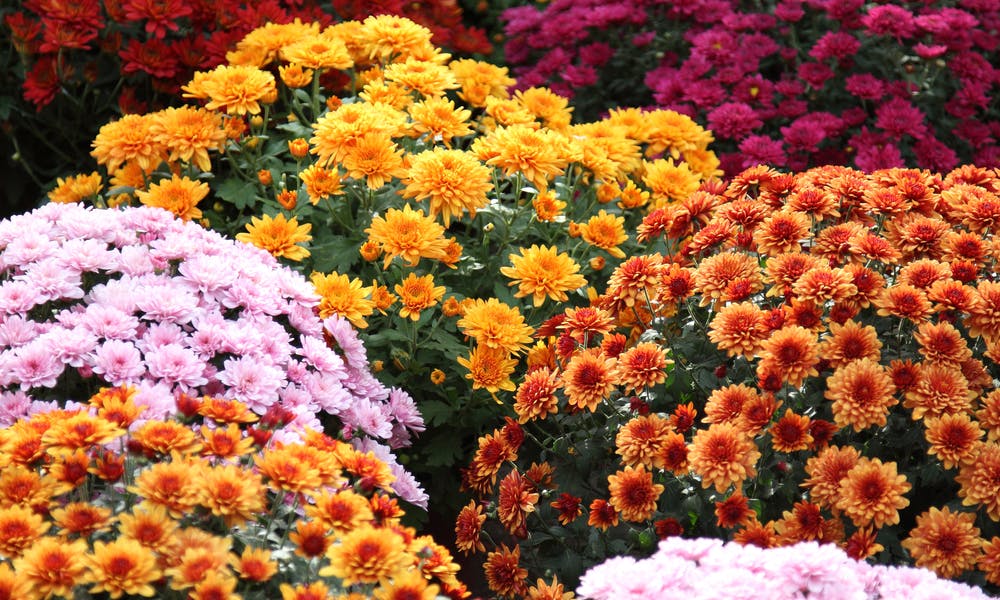If you can be a flower, what would you be? Well, if you want to provoke a deep feeling of happiness, joy, and a wide range of positive emotions, then the flower to be is the chrysanthemum flower. It is interesting to know that despite the prevailing view of the chrysanthemum flower’s positive connotations, in some cultures, chrysanthemums are associated with negative emotions. The beautiful flower is renowned for its profound meaning and representation that spans across generations and different cultures. This article focuses on:
* The origin
* The meaning
* The colors and symbolism
* The characteristics
* The uses
The Origin of The Chrysanthemum Flower
The first known instance of the chrysanthemum flower is recorded in ancient Chinese manuscripts that date back to the 15th century BC. The flower was largely used as an herbal remedy in ancient China. Further historical evidence of this is the Chinese city Chu-Hsien, aptly named after the flower, which means “chrysanthemum city.
The chrysanthemum flower didn’t gain prominence until it made its way to Japan in the 8th century A.D. Since then, it was considered an important symbol to the Japanese throne, and it became adopted as the emperor’s crest and seal. To this day, there is a festival in Japan to celebrate the chrysanthemum flower, called “Kiku no Sekku,” which means “Festival of Happiness.
Swedish botanist Karl Linnaeus was the first scientist to describe the flower and gave its scientific name when the flower became known to the western world. Since then, lots of varieties of the flower have been grown and cultivated throughout the western world. In 2014, there were already about 27,000 varieties of the chrysanthemums flower.
The chrysanthemum flower, widely known as the official birth flower of November, has grown in popularity in modern times. In the United States, chrysanthemums are the most commercially cultivated flowers, thus aptly dubbed the ‘Queen of Fall Flowers,’ and it’s considered the official flower of the city of Chicago.
The Meaning and Symbolism
The flower’s name is derived from the Greek words, chrysos (gold) and anthemos (flower), which means golden flower. This name is inspired by the traditional chrysanthemum flower, which is yellow. Although in modern times, as a result of years of artful cultivation, the flower comes in an array of different colors, ranging from white to purple to red.
Chrysanthemums are known for their negative and positive meanings, which differ from one region to the other:
* In Australia, the chrysanthemum flower is often considered the official flower for Mother’s Day. They are given as gifts to mothers on the day or worn to honor the departed souls of mothers lost in death
* In China, the flower is associated with wealth as well as a long, fulfilling life. It also symbolizes a “new life” or “reincarnation.” Hence, the flower is often offered as a gift to the elderly or a newborn.
* For the Victorians, the chrysanthemum flower represents friendship and good wishes
* The Japanese associate chrysanthemums with power and royalty. It is also offered as gifts to celebrate autumn, as the flower blooms during this period.
* In Belgium, Hungary, Lithuania, France, Poland, Austria, and other parts of Europe, the chrysanthemum flower is used at funerals and as memorial flowers to honor the dead. In these places, the chrysanthemum is often associated with death.
It is, therefore, absolutely important to know what the chrysanthemum flower means to people where you live before you offer it. It means different things to different people.
The Colors and Symbolism of the Chrysanthemum Flower
While it’s intriguing to learn of the stories and symbolism associated with the chrysanthemum flower mythology, it’s just as important to learn of what the different colors mean. Chrysanthemums come in a variety of vibrant colors that have different interpretations:
* Yellow chrysanthemums provoke feelings of friendship, joy, and fortune. In some cultures, it symbolizes neglected love.
* Red chrysanthemums are offered to reveal feelings of deep love and passion, often used at festivals.
* Pink chrysanthemum is a symbol of royalty popular in Japan is used to indicate longevity.
* Violet chrysanthemum is given to wish those that are sick a quick recovery.
* White chrysanthemum in some parts signifies deep loyalty and honesty. In other cultures, it is only used at funerals.
Characteristics of the Chrysanthemum Flower
This flower is one of the most cultivated ornamental flowers in the world and unique in its features and characteristics. A summary of the chrysanthemum flower characteristics is indicated below:
* They belong to the plant family Asteraceae, which is the largest family of the flowering plant.
* A chrysanthemum plant head is a cluster of smaller flower heads
* They grow to a height of 60inches
* Blooms during the autumn season
Uses of the Chrysanthemum Plant
Chrysanthemums are renowned for their medicinal properties. In the earliest known writings of the chrysanthemum flower, it is believed that the flower has the power of life and longevity. Historically, the Han people are famous for making wine from the plant’s boiled roots and drinking it on the ninth day of the ninth month to prolong their life.
In recent times, it has been proven that drinking chrysanthemum flower tea and taking derivatives of the flower, like vitamins and supplements, is effective in treating diabetes, fever, high blood pressure, and headaches. Researchers have also claimed products containing chrysanthemum are effective in the treatment of stomach cancer, blood sugar, and type 2 diabetes.
The leaves are used in various Chinese dishes, soups, and salads. It is considered an important ingredient in Chinese foods. Furthermore, derivatives of the chrysanthemum flower are active ingredients in insecticides and have been proven to repel mosquitoes.
Chrysanthemum is not only beautiful but also can send a strong message. It is advisable to take into consideration its meanings before offering it to someone.
